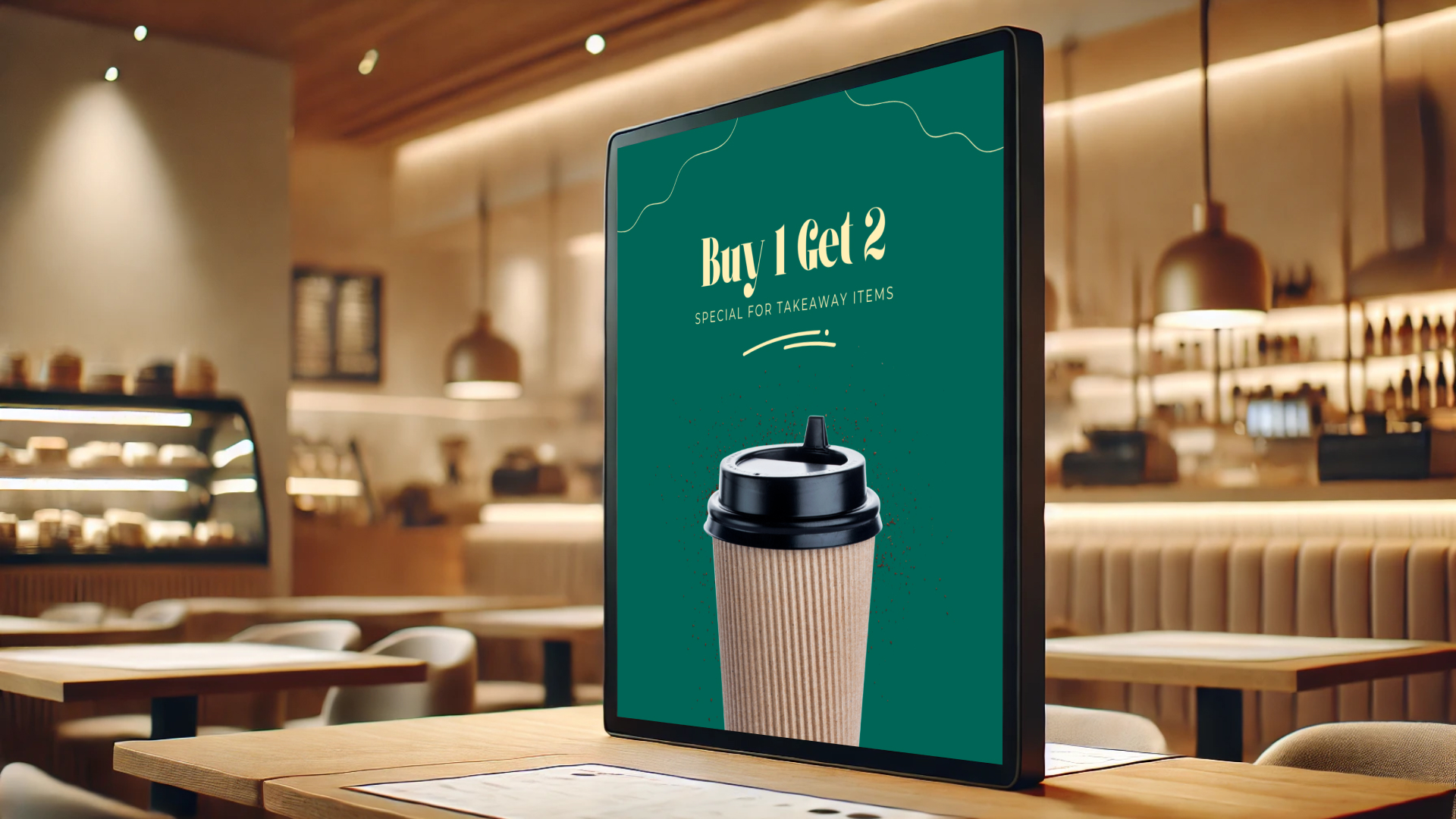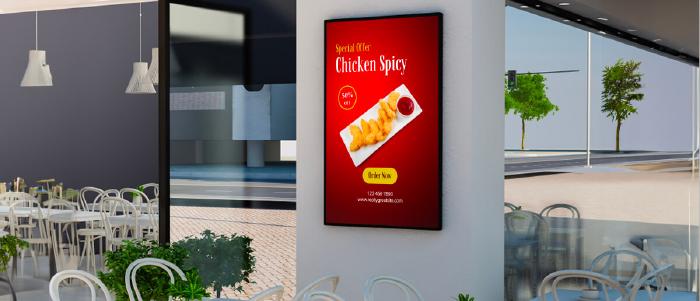
Dec 4 2024
7 min read

The iconic coffee house brand Starbucks has been experimenting with digital signage for a long time. Founded in the 1970s, the company finally decided in 2023 to switch to digital menu boards planning to move all of their stores to digital menus in the next couple of years
But why? What major opportunity did they identify? What can we, as a coffee shop, learn from it? Now, let’s break it down!

Nearly a decade and a half before the 2023 announcement, Starbucks tested their first digital menu board in 2010. Initially, they received a positive response and engagement. However, it was their data-driven personalization strategy that truly solidified their trust in the process and delivered tangible results
During a discussion about the third-quarter FY2023 financial results with analysts, Starbucks CEO Laxman Narsimha emphasized that the brand’s digital efforts, innovation, and personalization drive customer engagement.
According to a PYMNTS report, Starbucks experienced a 9% year-over-year increase among high- and low-income consumers and a 2% increase among middle-income diners. Additionally, Starbucks’ 90-day active membership grew by 25% to 75 million, with a 15% increase in the U.S., reaching 31.4 million members.
The decision to incorporate digital menu boards has sparked new growth opportunities for coffee shop owners. As digital menu boards become more common in the quick-service restaurant industry, customers are coming to expect this level of technology and visual appeal. Starbucks’ adoption of digital boards not only meets this growing customer demand but also sets a clear example for other businesses in the food industry to follow.

Starbucks follows a specific color scheme, orientation, and categorization of menu items. While you don’t need to copy them exactly, you can adopt their strategy to build your own digital menu board. Here are the steps to follow:
Step 1: Select a screen
Choose a screen for your digital menu board in the desired size. Starbucks and other premium coffee houses often use a vertical orientation for their digital menu boards, mimicking the experience of holding a traditional menu card. You can opt for a digital signage player or select an SoC display with a built-in player.
Check out: All you need to know about how to set up a digital menu board for restaurant
Step 2: Subscribe to a software solution
Look for digital signage software solutions that offer customization, flexibility, and affordability. The software must offer tons of templates which are highly customisable. This will allow you to use your creativity to craft a better digital menu board.
Also, focus on flexibility and compatibility of the solution. Softwares with POS integrations and advertising options allow hassle free data transfer right from the POS to the software console. Furthermore, the software must be compatible with the hardwares and other components of your menu board.
We suggest Pickcel’s digital signage solution as a great option for both small and large coffee houses. With a vast library of pre-made templates, Pickcel’s Artboard let’s you create and publish high-quality menu boards right from scratch. With Pickcel’s digital menu boards, you also get options for dayparting and scheduling your menu boards. The best part - it also has POS and billing integrations.
Step 3: Design your menu board
Once you have the setup, you can start designing your menu board. If you’re using Pickcel, it’s quite easy. They offer over 100 customizable digital signage menu board templates and an inbuilt content editor, allowing you to design from scratch and adjust size and orientation.
Step 4: Publish or schedule your menu board
After designing, you can publish or schedule your menu board. Pickcel’s calendar feature lets you schedule future content and manage timing with ease. And that’s it!
Here are the major 5 benefits:
1. Personalized recommendations
Digital menu boards can suggest personalized drink and food options based on customers’ past orders and preferences. These recommendations can be further enhanced by suggesting menu items popular in specific locations or regions, catering to local tastes.
2. Flexibility and customization
Digital menu boards allow coffee shops to easily update and change menu items, promotions, and pricing on the fly, without the need to manually replace physical menus. This flexibility enables Starbucks to quickly respond to changing customer preferences and market conditions.
3. Special offers
Rewards members may see exclusive promotions tailored to their tastes and purchasing habits. Personalized data helps identify the most ordered dishes, allowing the display of relevant discounts.
4. Real-time updates
Adjustments based on the time of day, season, or special events keep the menu relevant and engaging for customers. Scheduling and automating menu board updates streamline operational efficiency, saving time and labor costs for Starbucks.
5. Enhanced visual appeal
The vibrant, eye-catching digital displays attract attention and encourage potential purchases. A digital menu board can blend seamlessly into the brand’s color scheme, enhancing brand identity. Digital boards can also display animations and videos about new launches or food cinematography to tempt customers to order.
Also read: Guide to implementing digital menu ordering in your restaurant
To be honest, opportunity never knocks on the door; it waits for those who seek it, recognize it, and take decisive action. Though Starbucks was not the first to introduce digital menu boards into the food and restaurant business, they are one of the most successful brands to understand how it actually works. You have the opportunity, and we have the technology. Now jump. You need the FOMO this time; explore Pickcel now.

Dec 4 2024
7 min read

Nov 20 2024
8 min read

Nov 8 2024
7 min read

Nov 5 2024
5 min read
Take complete control of what you show on your digital signage & how you show it.
Start Free Trial Schedule My DemoSee How to Boost Sales & Branding with Digital Signage -40% Less Work, Faster Updates, Better Visibility
Unlock Exclusive Insights